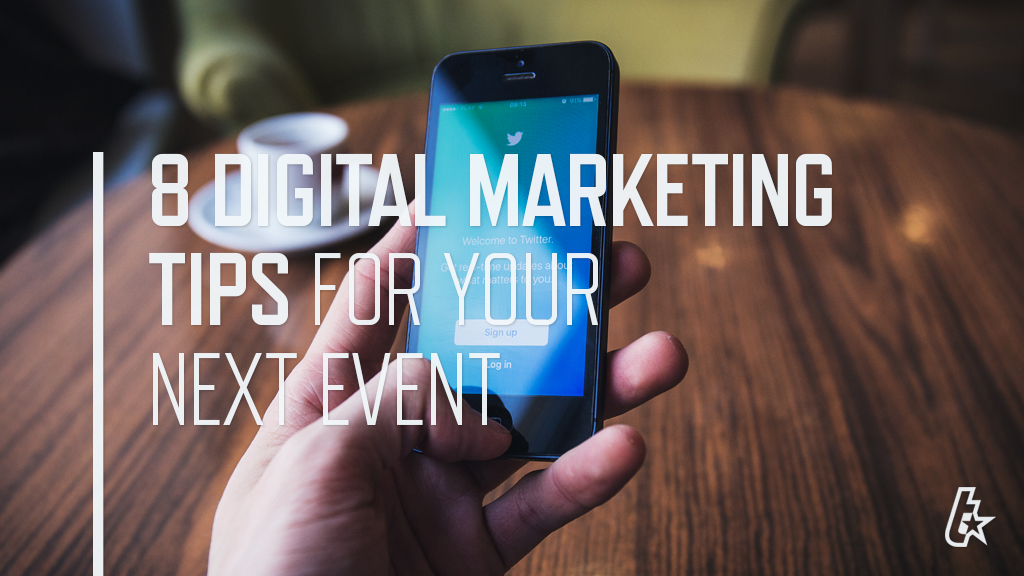We’ve mentioned this before, but our world has changed drastically, with us being more connected than ever before. Tablets and iPhones possess more power than our desktop computers did 10 years ago, so it should be no surprise that Digital has become the most vital component of the event marketing mix. A major part of the reason why digital marketing is so significant is that this is the first time we’ve been able to target audiences based on their interests. Unlike print, television, and radio, digital gives us the ability to drill deep down and speak directly to our audience(s). In social media sites like Twitter and Facebook, we have the ability to connect with our audiences immediately - through posts and real-time conversations. Digital media is so robust that we can discover where our target audience hangs out and when they click on an ad (and when that ad converts into a ticket sale). Then, thanks to this data, we can actually measure the ROI of our campaigns.
Digital campaigns can be broken down into two categories: paid and earned. Paid media is pretty straight forward: You pay to have something distributed (advertisements, media coverage, rewarding fans or followers who share your content with something of monetary value, etc.). Earned media is when someone distributes content on your behalf. This includes social sharing, re-blogging, free features in publications, and so on. It’s important to leverage both types of media to best suit your budget and fulfill your event needs.
Digital campaigns can seem overwhelming. This brief overview provides details on some of the most popular online resources.
Remember to tie this all back to your event’s overall strategy!
1. Facebook Ads
Facebook’s ad algorithms are so powerful that you can target user’s interests right down to the talent you have booked.
2. Retargeting
Retargeting, or remarketing, is web-based advertising that anonymously follows you around the Internet. A simple JavaScript code on your website puts a cookie in your visitor’s browser, which then places your ads into placeholders on other common websites they visit.
3. Twitter Ads
Twitter is an essential component of your event too! strategy, and has always been known as a lead-generating resource. Advertising on Twitter is relevant, timely, and engaging, and when used effectively, can help push your advertising efforts to the next level.
4. Event Listings
Be sure to take advantage of websites that post local event listings and event calendars (most of the time they are free).
5. Email Blasts
Create a strong email that stands out from the pack. Utilize your internal email database and media partner lists to get the word out.
6. Social Media Engagement & Monitoring
Keeping engaging content on your social media pages regularly is key to staying in touch with your community. Check daily on search terms related to your event, and follow the #hashtags. Every social channel and community has power users. Build relationships with them, along with partnerships to create buzz. Reach out and develop relationships with local bloggers and see if they’ll support you too.
7. Microsite Design
Develop a responsive and mobile-friendly microsite that provides information in a clear and easy manner. Add a retargeting code snippet, and track your data with free tools like Google Analytics. (Ex: Did website traffic spike the day of your press release? What about the day of your radio ads?
8. Entertainer Engagements
When available, artist video drops are a very effective way to engage with your audience. A familiar face saying they are coming to your town is something you can’t put a price tag on. Having a good relationship with the artists, management, and agents is crucial in gaining extra engagement like this - and getting the artist to utilize their social media.
Interested in event marketing in more detail? Learn the 6 pillars of an effective event marketing campaign to ensure your next event is launched right with our free resource!
FREE eBOOK: The 6 Pillars of Event Marketing


